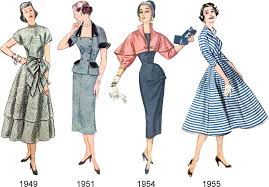
Toward the start of the twentieth century chic men wore trousers, waistcoat and coat. They wore top caps or homburgs.
In 1900 ladies wore long dresses. It was not adequate for ladies to demonstrate their legs. From 1910 ladies wore limp skirts. They were so limited ladies could just stumble along while wearing them. However, amid World War I ladies' garments turned out to be more down to earth.
Then in 1913 Mary Phelps Jacob imagined the cutting edge bra. She utilized two cloths joined by lace. In 1915 lipstick was sold in tubes interestingly.
In the nineteenth century ladies wore pants that finished well beneath the knee. However, amid the 1920s pants got to be shorter. They finished over the knee. In the mid-twentieth century more youthful ladies wore briefs.
An upheaval in ladies' garments happened in 1925. Around then ladies started wearing knee length skirts. In the mid and late 1920s it was trendy for ladies to look boyish. However, in the 1930s ladies' dress turned out to be more moderate.
Amid World War II it was important to spare material so skirts were shorter. In Britain garments were proportioned from 1941 until 1949.
In the interim the two-piece was developed in 1946. In 1947 Christian Dior presented the New Look, with long skirts and limited waists giving an 'hour glass' figure.
Amid the 1950s ladies' garments were full and female. However, in 1965 Mary Quaint concocted the smaller than usual skirt and garments turned out to be much more casual.
After the First World War men's garments turned out to be not so much casual but rather more easygoing. In the 1920s wide trousers called 'Oxford sacks' were in vogue. Men additionally regularly wore pullovers rather than waistcoats.
In the nineteenth century men's clothing secured very nearly the entire body, extending from the lower legs to the neck and the wrists. However, in the 1920s they started to wear shorts that finished over the knee and sleeveless vests. The primary y-fronts went on special in the mid-1930s.
In the second a large portion of the twentieth century garments for both genders turned out to be so shifted and style changed so quickly it would take too long to show all of them. One of the greatest changes was the accessibility of simulated filaments. Nylon was first made in 1935 by Wallace Carolers. Polyester was developed in 1941. It got to be regular in the 1950s. Vinyl (a substitute for calfskin) was designed in 1924. Mentors were outlined in 1949 by Adolf Dasler.
Fashion History (1700-1900)
Fashion History 1900 1949
How to make Kurta Neck Design in easy way
How To Make Neckline Border
0 comments:
Post a Comment